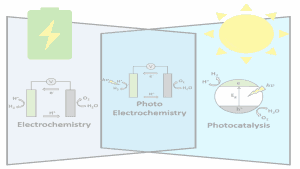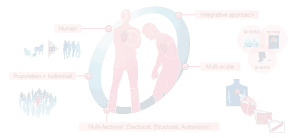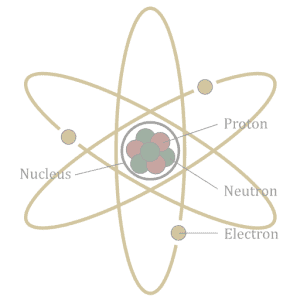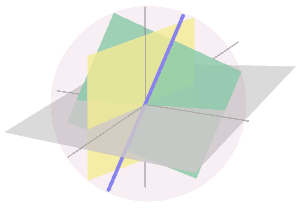“The industrial revolution […] allowed the construction of machines. The nanotechnology revolution is practically invisible. That is why people are still not aware of the achievements that can be achieved”
Daniel Lupi
No, I wasn’t playing any video games when I was preparing this post. I wrote this text during the pandemic, and I could not stop thinking about the fear and uncertainty that something that we cannot understand is able to cause in the human minds. It’s incredible the huge influence that something invisible to our eyes can have in our lives. If this is difficult to believe in 2020, I can’t imagine how difficult it was to accept this phenomenon when it was presented just 60 years ago. This takes us to the great revolution and success when a discipline was introduced into a part of the scientific world that would change the way we “see” what’s around us. This discipline is nanotechnology, and what I’m going to talk about in this post is how important those things that we can’t see are in our lives.
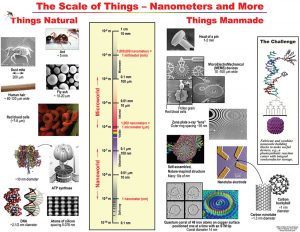
Figure 1. The nanometric scale. Image credit: infocobuild.
Let’s start by defining the nanometric scale, since everything we will refer to in this post happens within this scale. We know that the nanometer is a millionth of a millionth of a meter. But when we talk about the nanometer scale we mean from a tenth of a nanometer to a hundred nanometer (0.1 nm to 100 nm). We are referring to everything that is between the size of a red blood cell and the size of an atom.
Wait a minute… are you talking about manipulating objects smaller than 1 nm, like most atoms? Can atoms be physically manipulated, as if we were moving them with our hands? That’s right, although very specific tools are needed as we are not even able to see them. And it is right here where I will introduce the term “nanoscience” and “nanotechnology”.
First, let’s meet the genius who fashioned these two terms: Richard Feynman. This American physicist, a pioneer in the field of nanotechnology, gave the speech There’s Plenty of Room at the Bottom in Calltech (1959). In this speech, he describes a process that would allow us to manipulate atoms and molecules individually, through instruments of great precision. This is what is called nanotechnology. On the other hand, nanoscience is the branch of science dedicated to the study of objects on a nanometric scale. In general and in simplified terms, both concepts refer to the knowledge and manipulation of nanometric objects.
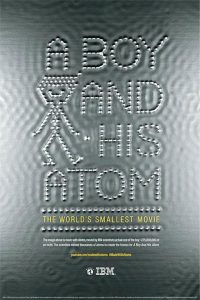
Figure 2. Poster with which IBM announced the video they themselves described as the “smallest movie in the world”. See “More information” for more details about this movie. Image credit: IBM.
In 2013, IBM made a huge achievement by showing this new area of science to the non-scientific world with a “graphic description” of what we are discussing: the short film called A boy and his atom. In fact, we could literally define it as the world’s “smallest” movie. Scientists used a special microscope to make this film, called scanning tunneling microscope (STM), that not only allows us to observe atoms (achieving a magnification of 100 million times), but also to physically manipulate them. The film was shot mainly for fun. IBM scientists started with an extremely flat surface, sprayed it with carbon monoxide molecules and then moved the molecules individually to make a frame-by-frame animation.
And why so much interest and, above all, effort in what is so difficult for us to control when we do not see it with our own eyes? Because the rules of this game called “reality” change: materials behave in a completely different way when they are in such a small scale, when their size is in the nanometric scale, and it is in these terms where the fundamental chemical reactions happen. It is in the nanometric scale where the initial reactions that lead to the reactions that we see in the macro scale take place.
For example, in the phenomenon of corrosion, there are many studies that focus simply on the rate of reaction with traditional electrochemical-based techniques. What is known as traditional corrosion science. Unfortunately, we know very little about the mechanism behind this phenomenon, those first molecular interactions that cause corrosion in aggressive environments. This information is essential to understand the basic principles of the phenomenon. Thanks to these techniques that allow us to manipulate and characterize atoms individually (such as the STM previously mentioned) we can understand what happens in the nanoscale and study those first atomic interactions that initiate the corrosion of the material.
These findings have shown us that certain compounds called precursors cause the initiation of corrosion reactions and, consequently, lead to material degradation. The discovery and characterization of these precursors on the surface during this phenomenon would have been impossible without nanometric resolution techniques. Starting with these precursors, the initial interactions can be studied and new compounds that arise from these new reactions are found. Subsequently, the latter will participate in other processes that are unknown, hence leading to new byproducts, and so on. All these new intermediate reactions belong to the mechanism by which the degradation of the material in question happens. By elucidating this mechanism and knowing the basic principles of corrosion we will be able to design efficient strategies which will efficiently help us to prevent materials from degradation and corrosion, thus reducing significantly the potential risk of human, environmental, and economic disasters.
This is just an example of the advances being made in the field of nanotechnology. The expectations that appeared in 1959 after Richard Feynman’s talk at Caltech were huge, and this research field is still very promising for the scientific world. Each day we discover new things in this area, new answers are provided to old questions. However, I have to admit that each day there are also new questions that need an answer arising. As Feynman said 60 years ago, there’s still story left to discover…
* * *
By David Ruiz Izuriaga (@druizizu), PhD student at the Photon Science Institute at the University of Manchester.
More information:
- There’s Plenty of Room at the Bottom: An Invitation to Enter a New Field of Physics, lecture given by physicist Richard Feynman.
- Microscope of Tunneling Effect. Explanation and Operation.
- A boy and his atom. As written by IBM, this movie is made of atoms – one of the smallest particles of any element in the universe. Just how small is an atom? Well, to see one, you need to magnify it 100 million times. In other words, there are about five million atoms in the period at the end of this sentence. Each frame of this film was made by moving thousands of atoms to their exact placements by the scientists at IBM’s research lab. The frames were combined into an animation -the world’s smallest movie – that tells the story of a boy and a wayward atom who meet and become friends.

